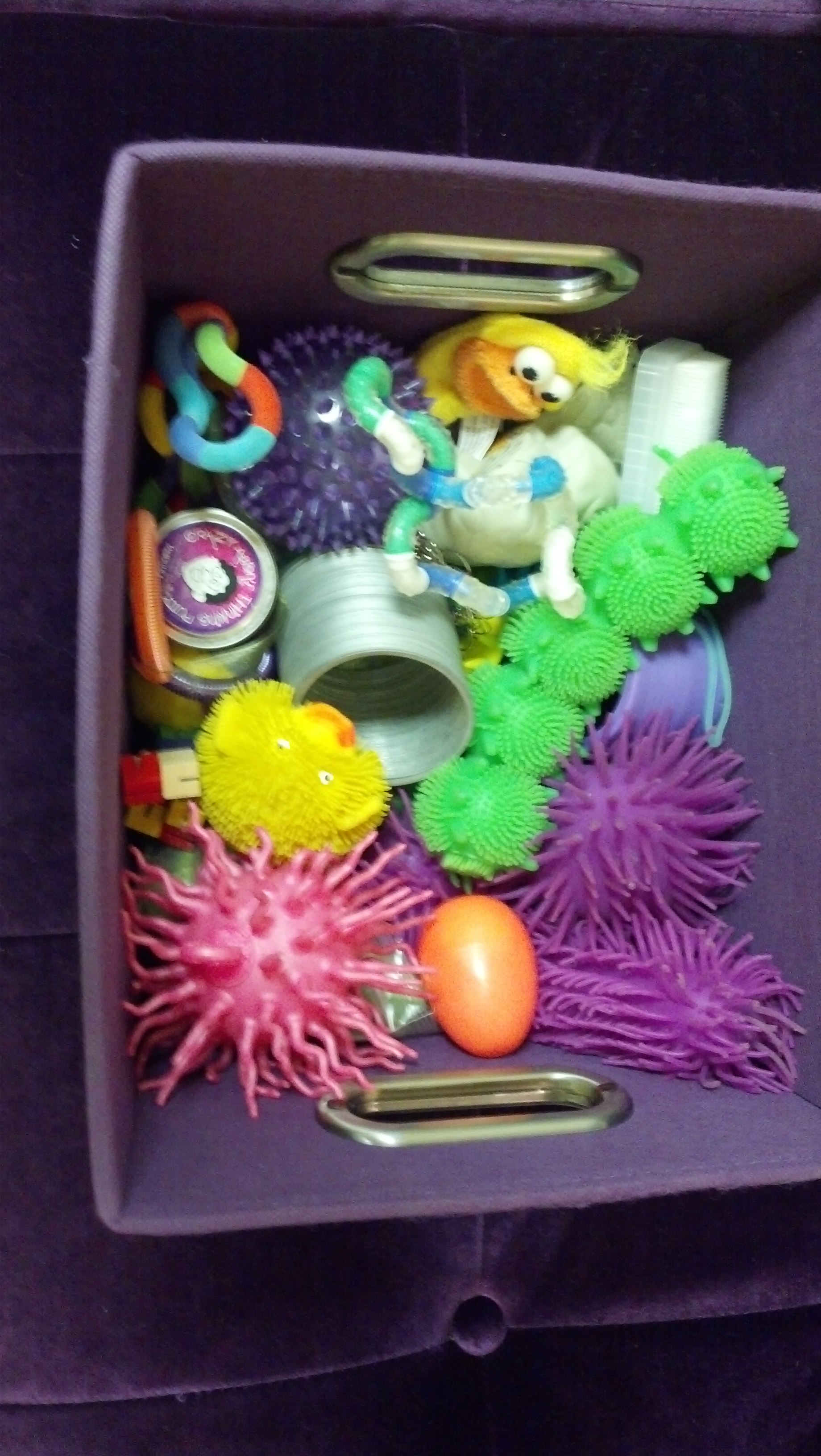Think Outside of the Fidget Box

When trying to get control of skin picking disorder (Excoriation disorder), hair pulling disorder (trichotillomania), and other body focused repetitive behaviors (BFRBs), there tends to be a lot of discussion about fidgets. But are they the cure? Do they help? Do we have to have silly looking, colorful pieces of plastic laying everywhere?
What are fidgets?
Fidgets, also called fiddles, are novel things to play with instead of picking or pulling.

They keep our hands busy so fingers are hopefully less likely to wander into searching for the next pick or pull. They sometimes meet sensory needs, such as amusing a bored tactile system. This is like eating a healthy food when you are hungry instead of junk food, except for your 5 senses. Other times fidgets function as a behavior replacement strategy, so you train yourself to play with the fidget instead of your skin or hair. Fidgets are also used to support focus for ADHD and can be calming when stressed out. In my clinical experience, fidgets do have their place in many treatment plans and do help a lot of people; However, they usually work best within a more comprehensive treatment approach.
Since many fidgets are kind of goofy looking and are far from subtle, clients ask about more covert ways to use fidgeting as a strategy, especially for public and professional settings.
Ways to Fidget without a Fidget:
- Explore and play with regular, everyday items that are already in your environment.
- Cell phone cases with bumps, ridges, or textured decorations.
- Pillow cases with ruffles, sequins, beads or embroidery.
- Move your hands or arms mindfully in a way that feels good or interesting
- Jewelry is great since it is as accessible as your own hair and skin! Find an everyday piece that keeps your interest and is tough enough to hold up to stretching, scratching, and bending.
- Clothing, you wear fidgets everyday! Seams, scarf tassels, folds in the fabric, frays on your jeans.
- Nail art- especially glitter polish or little stones glued on.
- Finger tip covers found at office supply stores
Strategies Beyond the Fidgets:
- Mindfulness. Mindfulness. Mindfulness! A quick meditation or mindfully engaging in the task at hand.
- Self Talk
- Self Compassion
- Problem solving the stressor instead of procrastinating
- Take on what you have been avoiding by picking or pulling, a hard conversation or an emotion maybe?
- Assertiveness & Boundaries. Ever notice how we frequently ruminate over conversations we wish we handled better while picking or pulling?
- Exercise, even if its just a short walk around the block
- HALT! Are you Hungry (or thirsty), Angry, Lonely or Tired? Meet that need directly.
- Somatic Experiencing techniques found at the bottom of this linked article
For more on skin picking disorder treatment click here.
For more on hair pulling (trichotillomania) treatment click here.
